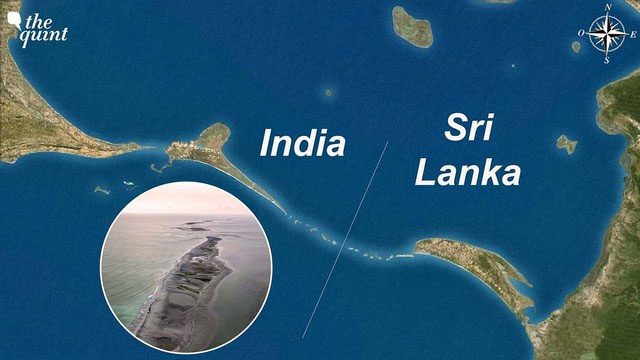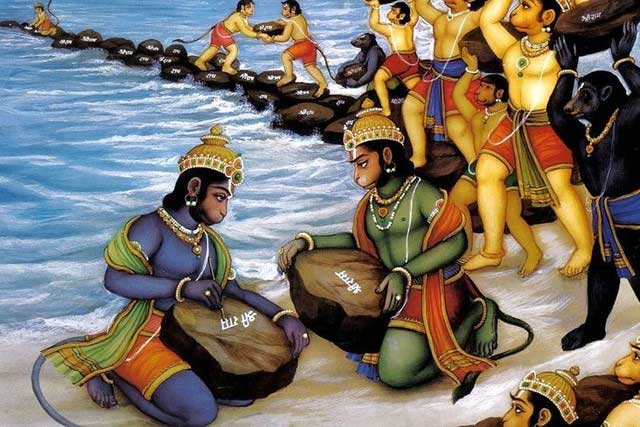The Rama Bridge, also known as Adam’s Bridge or Rama Setu, is a chain of natural limestone shoals located between Pamban Island and Rameswaram Island off the southeastern coast of Tamil Nadu, India, and Mannar Island off the northwestern coast of Sri Lanka.
Historians, archaeologists, and researchers of our distant past assert that civilization began on Earth approximately 5,000 years ago. They point out the fact that there is no concrete evidence proving the existence of a culture that predates the Sumerians and Egyptians.
When historians like John Anthony West, Robert Schoch, and Graham Hancock proposed that the architectural works on the Giza Plateau in Egypt could be much older than currently accepted, their claims were quickly dismissed. In fact, to this day we have not found any texts documenting their construction dates, which places these intricate masterpieces within the broadly accepted timeline of human development and culture.
But what if there is evidence? What if a structure is clearly identified in texts and oral traditions? And what if the stories related to that architecture place it outside the widely accepted timeline? If both the structure and the associated myths are analyzed, and both are supported by modern science, could it change the face of history?

The bridge extends 18 miles (29km) from the Indian mainland to present-day Sri Lanka. (Illustrative image).
Myth or Reality: The Rama Bridge in Hindu Tradition
This may be what happened at a site discovered in India. Located in the Palk Strait off the southeastern edge of India is a chain of limestone shoals. This shoal is characterized by a long and narrow landform typically consisting of sand, silt, and small pebbles accumulated over time. This landform was once thought to be naturally occurring; however, images captured by NASA satellites have revealed that the foundation for this shoal is a broken bridge lying beneath the ocean’s surface. Now referred to as “Adam’s Bridge,” it stretches 18 miles (29km) from the Indian mainland to present-day Sri Lanka.
Hindu tradition has long believed that this landform is the bridge constructed by their beloved deity Rama, as described in the Hindu epic Ramayana. It has been referred to since ancient times as “Rama Bridge” or Rama Setu.
Rama is a well-known figure in Hindu mythology. The book chronicling his life, the Ramayana, is an ancient classic. It narrates the time when gods flew in aerial chariots and giants and monsters roamed the Earth. Scholars have analyzed the Ramayana and argued that it is an ambitious fictional work. Is that true? Or could it be that Adam’s Bridge is indeed the structure described in this Indian classic? Some evidence supports the claim that Adam’s Bridge resembles the bridge depicted in the literature.

Some evidence supports the claim that Adam’s Bridge resembles the bridge depicted in the literature. (Illustrative image).
Mythological Correlation: Linking the Ramayana Story to Adam’s Bridge
According to the Ramayana, Rama was exiled because of a promise made by his father many years prior. Rama was exiled along with his brother Lakshmana and his wife Sita. After many events transpired, Sita was kidnapped by the ten-headed demon king Ravana. Rama then gathered an army, including a large group of monkeys, known as Vanara, to rescue Sita.
Sita was being held on the island of Lanka. Therefore, Rama and his army could not cross the ocean, but he was advised by the sea god to build a bridge across the water. Thus, Rama enlisted the help of the Vanara to construct it. The Vanara built an elevated causeway between the mainland and Lanka, creating it with stones and pebbles, described as resembling mountains. The construction project was said to have lasted five days. Once completed, the bridge allowed Rama to transport his Vanara army across the ocean to Lanka. Upon arrival, Ravana was killed, and Sita, Rama’s wife, was returned.
According to Hindu tradition, Rama lived during the Treta Yuga, a period that began approximately 2,165,000 years ago and lasted until about 869,000 years ago.

This bridge was actually created by humans. (Illustrative image).
Stone Extraction Evidence: Supporting Claims of Artificial Construction
To begin assessing the authenticity of the claims that Adam’s Bridge is the bridge mentioned in mythology, we must first look at the bridge itself. Dr. Badrinarayanan, a former director of the Geological Survey of India, conducted a survey of this structure and concluded that it is man-made.
Dr. Badrinarayanan and his team drilled 10 boreholes along the direction of Adam’s Bridge. What they discovered was astonishing. At a depth of about 6 meters (19.68 ft) below the surface, they found a consistent layer of sandstone, coral, and materials resembling gravel. Upon drilling deeper, approximately 4-5 meters, they found solid rock blocks beneath.
A team of divers went down to inspect the bridge. The rocks they observed did not have typical marine formations; they were determined to have originated from the two sides of the elevated causeway. Dr. Badrinarayanan also pointed out that there is evidence of ancient stone extraction in these areas. His team concluded that material from one of the two shores was placed on the sandy bottom of the water to form the elevated causeway.




















































